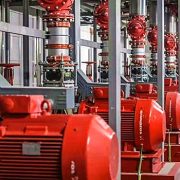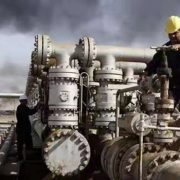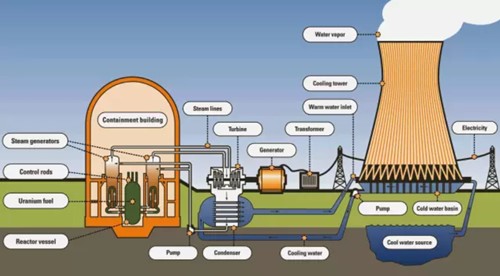Bolt strength grades marking for valve
A bolt is a cylindrical body with external threads consisting of a head and a screw. As one of the most commonly used fasteners, it is used in conjunction with a nut to connect two parts with holes like valves. The bolts used for valve flange connection can be classified into 3.6, 4.6, 4.8, 5.6, 6.8, 8.8, 9.8, 10.9, 12.9 and etc. The bolts of class 8.8 and above are called high-strength bolts which made of low or medium carbon alloy steel after heat-treated (quenched and tempered). Bolt grades are composed of two numbers and a decimal point, which respectively represent the nominal tensile strength value and bending strength ratio of bolt material, where the first number multiplied by 100 represents the nominal tensile strength of the bolt; These two numbers are multiplied by 10 to give the bolt its nominal yield point or yield strength.
A strength rating of 4.6 bolt means:
- Nominal tensile strength reaches 400MPa;
- The bending strength ratio is 0.6;
- Nominal yield strength reaches 400×0.6=240 MPa
Strength grade 10.9 high strength bolt, indicating that the material can achieve the following after heat treatment:
- Nominal tensile strength up to 1000 MPa;
- The bending ratio is 0.9;
- Nominal yield strength reaches 1000×0.9=900 MPa
Bolt strength grade is an international standard. Strength grades 8.8 and 10.9 refer to shear stress grades 8.8 and 10.9 GPa for bolts.8.8 nominal tensile strength 800 N/MM2 nominal yield strength 640N/MM2. The letter “X.Y” indicates the strength of the bolt, X*100= the tensile strength of the bolt, X*100*(Y/10)= the yield strength of the bolt (as specified: yield strength/tensile strength =Y/10). For example, the tensile strength of class 4.8 bolts is 400MPa; Yield strength: 400*8/10=320MPa. But there are exceptions, such as stainless steel bolts are usually labeled A4-70, A2-70.
Bolt grade marking and corresponding material selection:
|
Strength class |
Recommend material |
Minimum tempering temperature |
| 3.6 | Low carbon alloy steel 0.15%≤C≤0.35% | |
| 4.6 | Medium carbon steel 0.25%≤C≤0.55% | |
| 4.8 | ||
| 5.6 | ||
| 5.8 | ||
| 6.8 | ||
| 8.8 | Low Carbon Alloy Steel with 0.15%<C<0.35% | 425 |
| Medium carbon steel 0.25%<C<0.55% | 450 | |
| 9.8 | Low Carbon Alloy Steel 0.15%< C < 0.35% | |
| Medium Carbon Steel 0.25%<C<0.55% | ||
| 10.9 | Low Carbon Alloy Steel with 0.15%<C<0.35% | 340 |
| Medium carbon steel 0.25%<C<0.55% | 425 |
We are a fully stocked manufacturer and distributor of the flanged connected ball valve, bolted bonnet globe valve and we make the valve easy to find for your need. When installing and removing the valves, bolts should be tightened symmetrically, step by step and evenly. These valves bolt selection should refer to the following chart:
| Valve DN | Screw hole diameter(mm) | Nominal bolt diameter(mm) | Bolt number | Valve thickness (mm) | Flange thickness (mm) | Nut
(mm) |
Spring gasket (mm) | Single screw length (mm) | Bolt size |
| DN50 | 18~19 | M16 | 4 | 0 | 20 | 15.9 | 4.1 | 68 | M16*70 |
| DN65 | 18~19 | M16 | 4 | 0 | 20 | 15.9 | 4.1 | 68 | M16*70 |
| DN80 | 18~19 | M16 | 8 | 0 | 20 | 15.9 | 4.1 | 68 | M16*70 |
| DN100 | 18~19 | M16 | 8 | 0 | 22 | 15.9 | 4.1 | 72 | M16*70 |
| DN125 | 18~19 | M16 | 8 | 0 | 22 | 15.9 | 4.1 | 72 | M16*70 |
| DN150 | 22~23 | M20 | 8 | 0 | 24 | 19 | 5 | 80 | M20*80 |
| DN200 | 22~23 | M20 | 12 | 0 | 26 | 19 | 5 | 84 | M20*90 |
| DN250 | 26~27 | M22 | 12 | 0 | 29 | 20.2 | 5.5 | 91.7 | M22*90 |
| DN300 | 26~27 | M22 | 12 | 0 | 32 | 20.2 | 5.5 | 97.7 | M22*100 |
| DN350 | 26~27 | M22 | 16 | 0 | 35 | 20.2 | 5.5 | 103.7 | M22*100 |

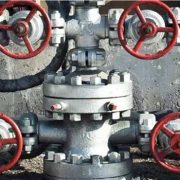
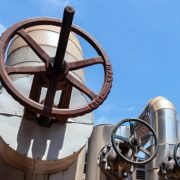
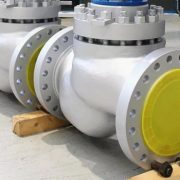
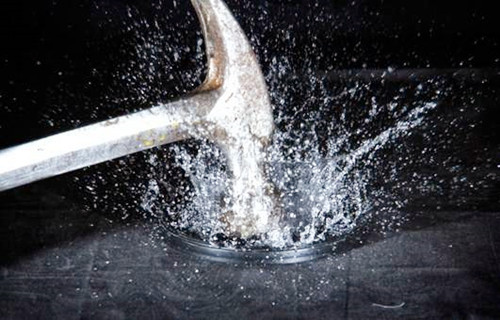
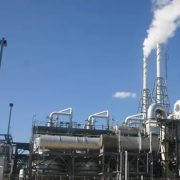
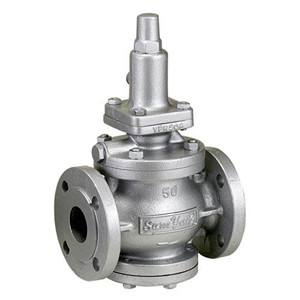 A steam pressure-reducing valve is an indispensable part of many steam systems. It plays a critical role by providing stable steam pressure and reduces the temperature to process applications in a process plant.
A steam pressure-reducing valve is an indispensable part of many steam systems. It plays a critical role by providing stable steam pressure and reduces the temperature to process applications in a process plant.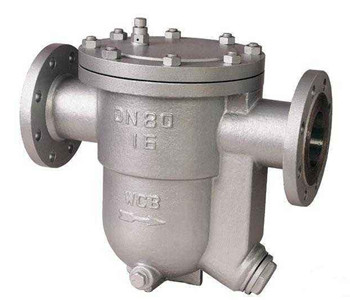 A steam trap is a kind of valve which can automatically remove condensed water and other non-condensing gas from the steam pipe and steam equipment and prevent steam leakage. The water to be discharged mainly comes from the condensate water at the bottom of the boiler cylinder, the condensate water at the bottom of the workshop cylinder, the condensate water of the steam separator before decompression and the condensate water of the conditioner sub-cylinder. According to its operation principle, there are mainly floating ball drain water valve, thermodynamic drain water valve, thermostatic drain water valve, inverted bucket drain water valve and so on.
A steam trap is a kind of valve which can automatically remove condensed water and other non-condensing gas from the steam pipe and steam equipment and prevent steam leakage. The water to be discharged mainly comes from the condensate water at the bottom of the boiler cylinder, the condensate water at the bottom of the workshop cylinder, the condensate water of the steam separator before decompression and the condensate water of the conditioner sub-cylinder. According to its operation principle, there are mainly floating ball drain water valve, thermodynamic drain water valve, thermostatic drain water valve, inverted bucket drain water valve and so on.